Università degli Studi di Pavia
Centro Interdisciplinare di Bioacustica e Ricerche Ambientali
Via Taramelli 24 - 27100 Pavia - Italye-mail : cibra@unipv.it
The voices of marine mammals of the Mediterranean Sea
Physeter macrocephalus
The vocalizations of the sperm whale (Physeter
macrocephalus) are made by very brief impulsive
sounds, called clicks, organized in variable length
sequences. These clicks generally reach 30-35 kHz in
frequency with repetition rates of 2-3 clicks per second.
Generally the clicks are organized in sequences of
variable length and they are produced by the animals
during the dives, that last on average 30-50 minutes, when
principal activity is the hunting and the recognition of
the environment. Every sequence of clicks is followed by
brief periods of silence or by sequences of clicks
repeated at high rates called creak or runs (Mullins et to
the., 1988) with a probable echolocation function.
At the end of regular sequences, short
series of clicks with a stereotyped pattern can be
emitted; these are calleded "codas" and may have a total
duration of 0,5-5 seconds. The meaning of the codas is
still uncertain: the studies conducted until now consider
them as social communication signals because often when
these signals are heard more than one animal are present.
According to some authors the existence of codas with
different patterns, perhaps characteristic of geographical
zones, may indicate that sperm whales could have evolved a
sort of regional identifier that animals of a same area
would use as a recognition signal.
In the Mediterranean Sea, codas with the pattern / / / /
(3+1) have been recorded in 99% of the cases; thus the 3+1
pattern can be considered typical of the Mediterranean Sea
although it has been found in other areas.
Recently, a new sound type called “trumpet” has been
identified and recorded. It is a weak signal that was
recorded several times in the past, though only recently
it has been definitively linked to sperm whales. Produced
at the beginning of the immersion, only in a small
percentage of animals, it has an unknown meaning, and it
is even perhaps due to physiological processes that are
activated at the beginning of a deep dive.
The isolated animals are generally silent
when in surface and they vocalize according to
recognizable patterns during the dives. In the case of
social aggregations with males, females and calves, a
large variety of click patterns are also emitted while
animals are at the surface.
In the early years of underwater acoustics, the military
sonars operators listened to these sounds and attributed
them to a nonexistent carpenter fish; listening to a
recording gotten with military sonobuoys seems really to
listen to the noises of a carpentry. P_macrocephalus_3animals_Difarbuoy.wav
(5.4MB) P_macrocephalus_3animals_Difarbuoy.mp3
(980kB)
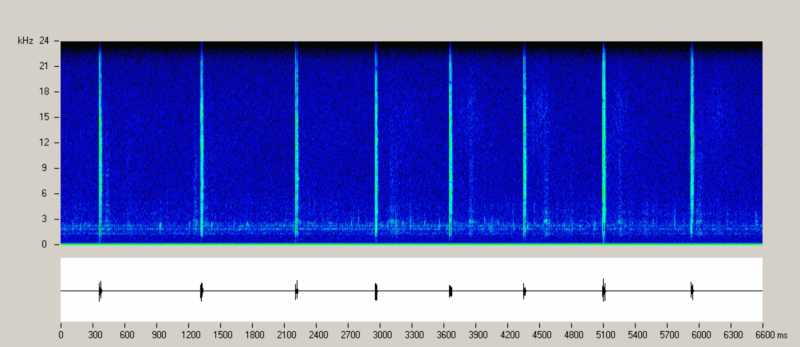
Typical series of clicks emitted by a sperm whale
while diving.
P_macrocephalus_clicks.wav
(7.9MB) P_macrocephalus_clicks_short.wav
(860kB)
P_macrocephalus_clicks.mp3
(1.4MB) P_macrocephalus_clicks_short.mp3
(160kB)
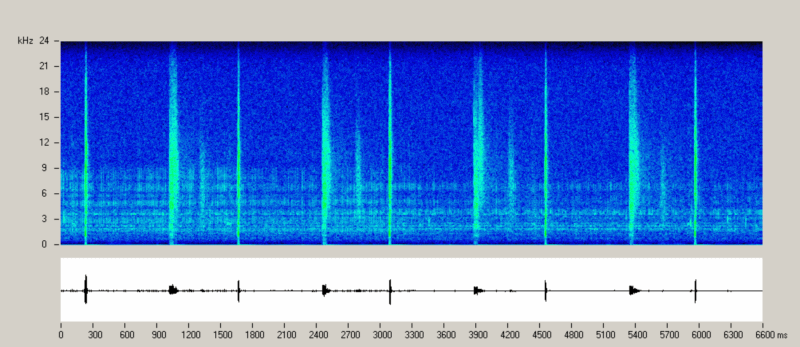
In some recordings it is possible to hear echoes from
the seafloor (arrows) and from the coast. P_macrocephalus_clicks_echoes.wav
(2MB) P_macrocephalus_clicks_echoes.mp3
(354kB)
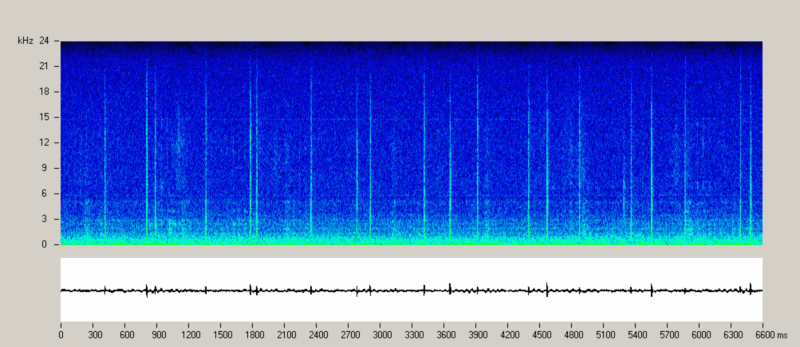
Clicks emitted by two diving sperm whales.
P_macrocephalus_3animals.wav (8MB)
P_macrocephalus_3animals_short.wav (1MB)
P_macrocephalus_3animals.mp3
(1.3MB)
P_macrocephalus_3animals_short.mp3 (170kB)
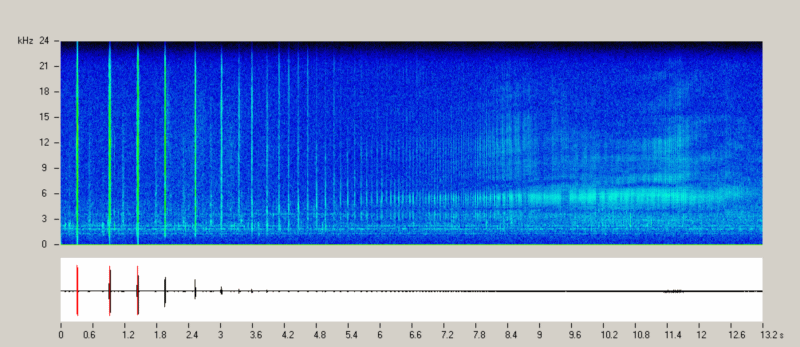
Recording of a sperm whale creak. The emission rate of
regular clicks (on left side) increases up to hundreds
per second; the amplitude of the clicks decreases
accordingly with the the increase in the repetiotion
rate.
P_macrocephalus_creak.wav (2.1MB) P_macrocephalus_creak.mp3
(392kB)
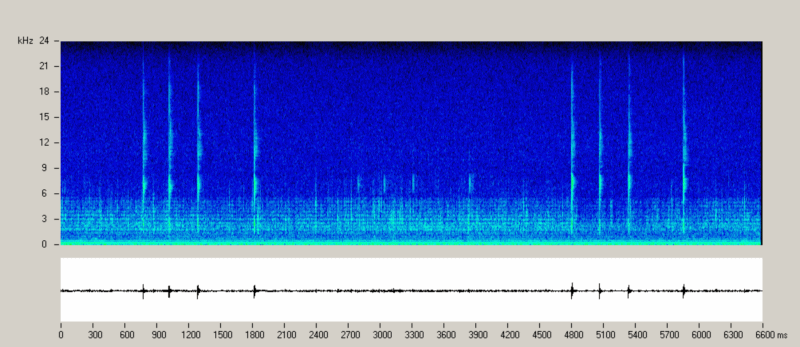
Series of two “codas” with the typical Mediterranean
pattern (/// / also reported as 3+1).
P_macrocephalus_codas.wav
(860kB) P_macrocephalus_codas.mp3
(156kB)
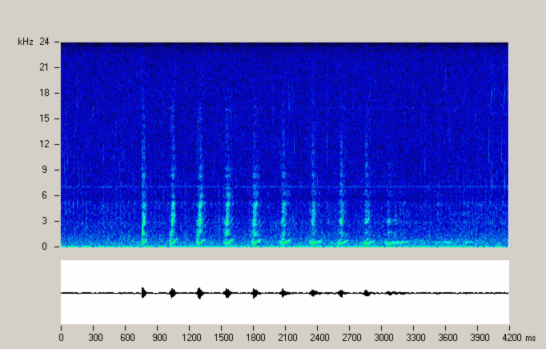
A rare recording of a “trumpet” recorded by CIBRA
in 1996. It is a tonal sound weaker than clicks that can
be recorded at short range only. It is emitted just
after the fluke-up, normally before the animals starts
clicking. P_macrocephalus_trumpet.wav
(350kB) P_macrocephalus_trumpet.mp3
(65kB)
Created June 2005, updated August 2005
